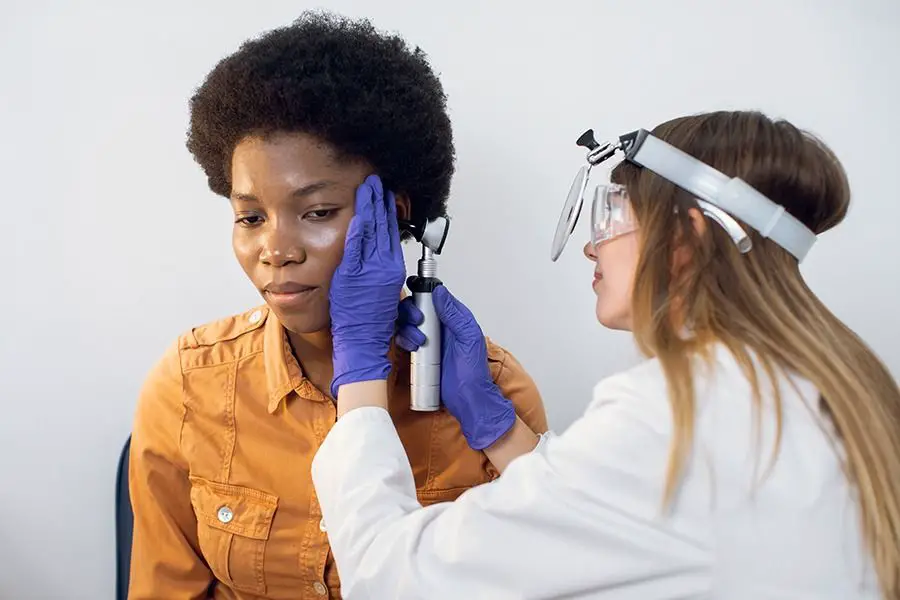Introduction
Aural rehabilitation is a critical aspect of pediatric cochlear implant rehabilitation, and early family-centered intervention is key to achieving successful outcomes. However, providing effective intervention for linguistically diverse families can be challenging. It is essential to consider the unique cultural, linguistic, and emotional factors that shape each family’s distinctive nature when determining the language used in aural rehabilitation intervention.
Factors such as the family’s language use and proficiency, the child’s dominant language, family goals for language learning, and language environments play a crucial role in determining the intervention language. Additionally, it is necessary to consider whether the child is a simultaneous or sequential bilingual language learner, the majority language of education, and the child’s age and current level of skills.
When working with families who speak languages other than those shared by the rehabilitation professional, additional strategies are necessary to ensure effective communication and equitable access to information. These strategies include engaging interpreters or trained therapy assistants who speak the families’ home language proficiently and using bilingual therapy materials.
Providing aural rehabilitation services in a language the rehabilitation professional doesn’t speak requires individualized support and consideration of unique cultural and linguistic factors. Multilingual and bilingual cochlear implant recipients can achieve language skills similar to those of monolingual children with cochlear implants with an individualized language plan and appropriate language support and exposure. Rehabilitation professionals can work with families to develop strategies that support the child’s language development in both languages, ultimately leading to successful outcomes for the child.
Factors to Consider When Determining the Intervention Language for Aural Rehabilitation
Early family-centered intervention is crucial for successful outcomes in pediatric cochlear implant rehabilitation. Providing individualized support for linguistically diverse families is essential to promote linguistic accessibility and home languages. To achieve this, it is crucial to take into consideration the unique cultural, linguistic, and emotional factors that shape each family’s distinctive nature.
The language used in aural rehabilitation intervention depends on several factors. First, it is important to consider the family’s language use and proficiency, as well as the child’s dominant language if they have one. Family goals for their child’s language learning and the child’s language environments also play a crucial role in determining the intervention language. Additionally, it is necessary to consider the majority language of education and whether the child is a simultaneous or sequential bilingual language learner.
Furthermore, if the child’s family is bilingual, including fluent proficiency in the majority language of education, or monolingual other-language-speaking, it is essential to consider their unique linguistic needs. Finally, the child’s age and current level of skills are also factors to consider when determining the intervention language.
In conclusion, providing effective aural rehabilitation services to linguistically diverse families requires individualized support and consideration of their unique cultural and linguistic factors. By taking into account the factors mentioned above, rehabilitation professionals can work with families to determine the most appropriate intervention language to promote linguistic accessibility and home languages, ultimately leading to successful outcomes for the child.
Strategies for Providing Aural Rehabilitation in a Language the Rehabilitation Professional Doesn’t Speak
Effective communication and access to information are critical components of aural rehabilitation services. However, when working with families who speak languages other than those shared by the rehabilitation professional, additional strategies are necessary to ensure equitable access to intervention and information.
One strategy is engaging interpreters or trained therapy assistants who speak the families’ home language proficiently. This approach ensures that families can fully understand the rehabilitation professional’s instructions and provide relevant feedback. The use of interpreters also facilitates better communication between the rehabilitation professional and the family, leading to more effective and individualized aural rehabilitation services.
Another strategy is to use bilingual therapy materials. Rehabilitation professionals can use these materials to facilitate families’ practice of strategies in their home language. For example, while working with a Russian-speaking family, a therapist may explain an activity such as a story from Lesson Kit 17 Sharks and Whales and a strategy such as acoustic highlighting via the interpreter, using the story in both English and Russian. The therapist can then demonstrate a page of the story in English and the strategy while the parent observes with the same story in Russian. Finally, the parent can continue the story in Russian, with coaching and feedback from the therapist via the interpreter or bilingual therapy assistant.
Overall, providing aural rehabilitation services in a language the rehabilitation professional doesn’t speak requires additional strategies to ensure effective communication and equitable access to information. Engaging interpreters or trained therapy assistants who speak the families’ home language and using bilingual therapy materials are effective ways to facilitate communication and improve the quality of aural rehabilitation services for families from linguistically diverse backgrounds.
Examples
Examples of Providing Aural Rehabilitation with Interpreter Assistance
Effective communication is crucial for successful aural rehabilitation services. When working with families who speak a language other than that of the rehabilitation professional, using an interpreter can be helpful in ensuring effective communication and equitable access to information. The following examples illustrate how to provide aural rehabilitation services to Russian-speaking and Polish-speaking families with the assistance of an interpreter.
In the first scenario, a therapist who only speaks English works with a Russian-speaking family. The therapist explains the activity and strategy using English, which is then interpreted into Russian by the interpreter. The therapist then demonstrates the activity using acoustic highlighting in English, while the parent observes the same story in Russian. The interpreter also interprets the demonstration into Russian. Finally, the parent reads the same story in Russian to their child using acoustic highlighting, with the therapist providing coaching and guidance through the interpreter in both English and Russian.
In the second scenario, an English-speaking therapist works with a Polish-speaking family who has limited proficiency in English. The therapist explains the waiting and modeling strategy for encouraging the child’s vocalizations in English, which is then interpreted into Polish by the interpreter. The therapist then identifies key words in the play sequence and asks the parent for appropriate Polish words to use in this context. The interpreter interprets this into Polish for the parent to offer suggestions. The therapist then demonstrates the activity using waiting and modeling with bubbles in English while looking to the parent to use the key words in Polish. The interpreter interprets the demonstration into Polish. Finally, the parent practices using waiting and modeling to encourage their child’s vocalizations in Polish, with the therapist providing guidance and coaching through the interpreter in both English and Polish.
In both scenarios, the aim is for the parent to interact with their child and practice the activity, strategy, and target the child’s goals in their native language. With the assistance of an interpreter, families can receive equitable access to information and effective communication, leading to successful outcomes in aural rehabilitation services.
Achieving Language Skills in Multilingual and Bilingual Cochlear Implant Recipients
As the world becomes more connected, it is increasingly common for families to speak more than one language, and children spend considerable time in environments where languages differ from their families’ home language(s). For children with cochlear implants, learning more than one language is achievable, and research has shown that bilingual children with cochlear implants can achieve language skills similar to those of monolingual children with cochlear implants.
In fact, studies have demonstrated that bilingualism can provide cognitive and linguistic advantages, such as increased executive function, metalinguistic awareness, and phonological awareness. Children with cochlear implants who grow up in multilingual or bilingual environments can develop skills in both languages with the appropriate language support and exposure.[6,7,8]
For successful language development in multilingual or bilingual cochlear implant recipients, it is crucial to develop an individualized language plan that considers the child’s unique linguistic needs and the family’s goals. Rehabilitation professionals can work with families to identify the languages spoken in the home and the language environments in which the child is exposed to, and develop strategies to support the child’s language development in both languages.
Some strategies that can facilitate language development in multilingual or bilingual cochlear implant recipients include encouraging the use of both languages in the home, promoting literacy in both languages, and utilizing bilingual or multilingual language intervention materials. Additionally, engaging with the local community can provide opportunities for the child to practice their language skills in real-life situations.
In conclusion, multilingual and bilingual cochlear implant recipients can achieve language skills similar to those of monolingual children with cochlear implants. With an individualized language plan and appropriate language support and exposure, children can develop skills in both languages and reap the cognitive and linguistic advantages of bilingualism. Rehabilitation professionals can work with families to develop strategies that support the child’s language development in both languages, ultimately leading to successful outcomes for the child.
Conclusion
In conclusion, providing effective aural rehabilitation services to linguistically diverse families requires individualized support and consideration of their unique cultural and linguistic factors. The language used in aural rehabilitation intervention depends on several factors, including the family’s language use and proficiency, the child’s dominant language, family goals for their child’s language learning, and the child’s language environments. Rehabilitation professionals must also consider whether the child is a simultaneous or sequential bilingual language learner, their age, and current level of skills when determining the intervention language.
When working with families who speak languages other than that of the rehabilitation professional, using interpreters or trained therapy assistants who speak the families’ home language proficiently can facilitate effective communication and equitable access to information. Additionally, using bilingual therapy materials can help families practice strategies in their home language and improve communication and intervention quality.
For multilingual and bilingual cochlear implant recipients, developing an individualized language plan is crucial to successful language development. Rehabilitation professionals must consider the child’s unique linguistic needs and the family’s goals, identify the languages spoken in the home and the language environments in which the child is exposed, and develop strategies to support the child’s language development in both languages. Strategies such as encouraging the use of both languages in the home, promoting literacy in both languages, and utilizing bilingual or multilingual language intervention materials can facilitate language development in these children.
In conclusion, by taking into account the factors discussed in this blog and developing individualized language plans and strategies, rehabilitation professionals can promote successful outcomes for linguistically diverse families and multilingual and bilingual cochlear implant recipients. Effective communication and equitable access to information are crucial components of aural rehabilitation services, and it is the responsibility of rehabilitation professionals to ensure that all families receive the support and resources they need to promote linguistic accessibility and home languages.









